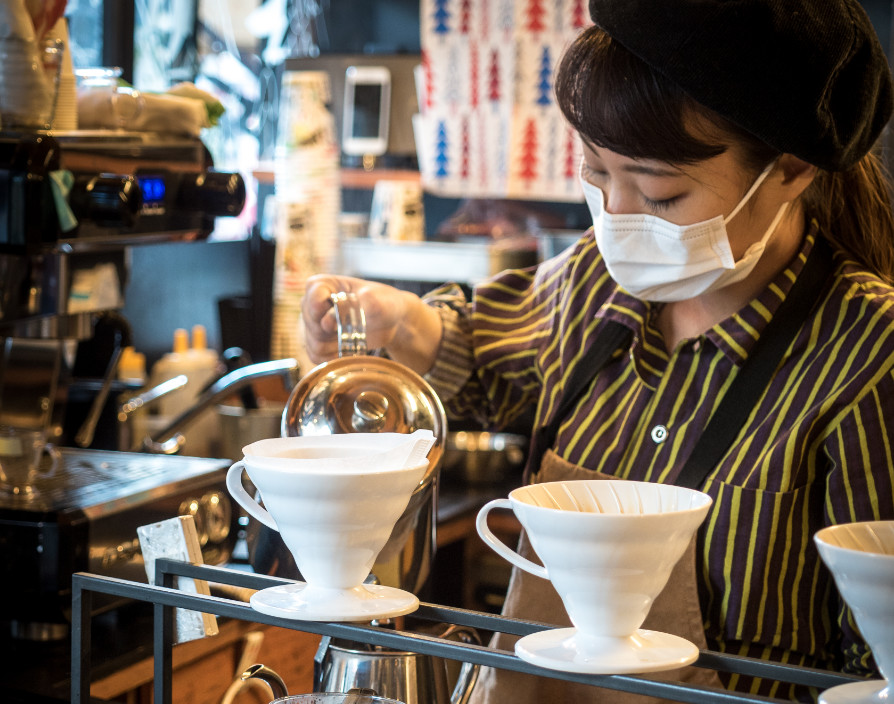With the Olympic Games currently taking place in Tokyo, there should be plenty of coffee being drunk by those enjoying the greatest show on earth – although mainly at home!
Japan may not be the biggest coffee-drinking country in the world when it comes to per capita. But with a population that is almost twice the size of the UK, Japan does have one of the largest coffee markets on the planet. With regards to capita, Finland certainly takes some beating in this category while Europe, as a whole, certainly enjoys their coffee.
Japan, meanwhile, has a population in excess of 125 million and in 2019 alone consumed over 7.5m 60kg bags of coffee. This is a remarkable increase of around 50% from the amount of coffee consumed in the country just over 30 years ago. Much of this coffee has to be imported, and with the Olympics currently taking place in and around the country’s capital Tokyo, one can only assume that this choice of beverage is in high demand right now.
Coffee is usually prepared in one of three ways. And with this in mind, depending on which Olympic sport you are watching, then the manner in which you drink your coffee may well depend on the nature of the event that is grabbing your attention.
1) Espresso
It’s dispensed via a machine that uses boiling water. Espresso has more caffeine per unit volume than most coffee beverages. However, the amount of liquid consumed is usually much smaller than a typical mug of hot drink. Originated in Italy more than 100 years ago, this is a perfect choice for sprint events, such as the men’s or women’s 100 metres, which usually lasts around 10 seconds.
2) Siphon Maker
Originates from Asia, and in existence for almost two centuries, it uses a vessel consisting of an upper and lower chamber. The lower chamber contains water, while grounded coffee is placed in the upper deck. This vessel is placed on a hot surface, which brings the water to a boil. Steam from the lower chamber is pushed into the upper chamber, where it combines with the coffee. The fermenting coffee is then poured off from the top. The coffee brew should be left undisturbed for 80-90 seconds before pouring into a cup or mug. There are many Olympic events where this type of coffee appears to be perfect, so the choice is yours. Perhaps a three round boxing contest or one of the shorter track cycling events.
3) Coffee Dripper
This method is extremely popular in the UK. Ground coffee is placed on top of an empty coffee pot, before hot water is poured slowly over the beans. This is particularly fashionable among coffee fans as it allows the flavour and strength of each batch to be brewed to their personal preference. It sometimes can take as long as 10 minutes to brew the perfect cup, so patience is required. So sit back and watch a 5,000m track final while you wait.
While the Olympic Games is taking place in almost-empty stadiums and arenas, and visiting the country remains severely restricted, you may be planning to go there at some point in the future.
Those who do eventually visit Japan will be able to purchase coffee from automated machines located in convenience stores. Canned coffee is available, hot or cold, from around five million vending machines and is extremely popular with those travelling to and from work. Iced-coffee, as well as coffee served over ice, is another local favourite.
Japanese coffee shops are in abundance, some quiet and some loud. Those which also serve alcohol tend to be at the noisier and busier end of the spectrum. Most Japanese coffee shops offer a large selection of beans for customers to choose from, with speciality coffees and blends imported from all over the globe.
For those still in the UK, and wishing to sample a large variety of blends and tastes over here, you can always visit your nearest Cafe2U van which provides a large range of quality coffee drinks.




































